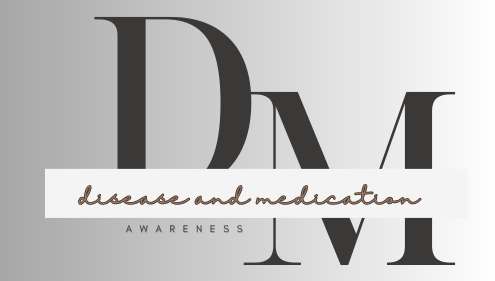Introduction:
Learn about common symptoms of infectious diseases, from fever and fatigue to severe neurological issues. From symptoms to solutions. An infectious disease is caused by organisms similar to bacteria, viruses, fungi, or parasites that can penetrate the body and multiply, leading to illness. These pathogens can be transmitted from one person to another, directly or indirectly, through various means such as air, water, food, bodily fluids, or vectors like insects.
Infectious diseases are caused by microorganisms known as pathogens. These pathogens can be classified into different groups based on their characteristics and how they affect the body. For example
Bacteria Infections: Single-celled organisms that can reproduce independently include Streptococcus, Salmonella, and Escherichia coli (E. coli), which are responsible for UTIs , Tuberculosis(TB), step throat, etc
Viral infections: Tiny infectious agents that need a host cell to replicate. Common viruses include influenza virus, HIV, and SARS-CoV-2 (the virus responsible for COVID-19).
Fungal infections: Yeasts, molds, and other fungi can cause infections, such as Candida albicans (responsible for yeast infections) and Aspergillus (causing lung infections).
Parasitic infections: organisms that live on or inside a host and benefit at the host’s expense. Examples include Plasmodium (causing malaria), Giardia (responsible for giardiasis), and helminths (worms causing diseases like schistosomiasis).
How does infectious disease spread?
Infectious diseases can spread through various modes of transmission.
- Direct contact: person-to-person contact through bodily fluids like saliva, blood, or sexual contact.
- Indirect contact: transmission via objects or surfaces contaminated with pathogens, like doorknobs, utensils, or contaminated water.
- Airborne Transmission: Pathogens can spread through respiratory droplets expelled when an infected person coughs or sneezes, remaining suspended in the air for a period of time.
- Vector-borne Transmission: Some diseases are spread by vectors like mosquitoes, ticks, or fleas. These vectors carry and transmit pathogens from one host to another.
Signs and Symptoms of Infectious Disease:

The signs and symptoms of infectious diseases can vary widely depending on the specific microorganism involved, the site of infection, and the individual’s immune response. However, some common signs and symptoms include:
- Fever
- Fatigue
- Malaise
- Respiratory symptoms (coughing, sneezing, shortness of breath)
- Gastrointestinal symptoms (nausea, vomiting, diarrhea, abdominal pain)
- Rash or skin lesions
- Neurological symptoms (headache, confusion, seizures)
- Muscle aches
- Loss of appetite
- Jaundice (yellowing of the skin and eyes)
- Sore throat
- Joint pain
- Chills
- Sweating
- Redness, warmth, or swelling at the site of infection
- Altered consciousness
It’s important to note that not all infectious diseases cause symptoms, and some individuals may be asymptomatic carriers of infectious agents, meaning they can spread the disease to others without showing any signs themselves.
Prevention from Infectious Disease:
Preventing infectious diseases or infections involves a combination of personal hygiene practices, vaccination, and environmental measures. Here are some key strategies:
- Hand hygiene: Wash your hands regularly with soap and water for at least 20 seconds, especially after using the restroom, before eating, and after coughing, sneezing, or blowing your nose.
- Vaccination: Stay up-to-date with recommended vaccinations for preventable infectious diseases. Vaccination not only protects you but also contributes to community immunity, reducing the spread of diseases.
- Food safety: Cook foods to the appropriate temperature, avoid cross-contamination between raw and cooked foods, and refrigerate perishable foods promptly.
- Water and sanitation: Ensure access to clean drinking water and practice good sanitation habits, such as using clean toilets and washing hands after using the restroom. Proper disposal of sewage and waste helps prevent the spread of infectious diseases.
- Vector control: Take measures to control insects and other vectors that can spread diseases, such as mosquitoes (which transmit malaria, dengue fever, Zika virus, etc.), ticks (which transmit Lyme disease and other infections), and fleas (which transmit plague and other diseases).
- Safe sexual practices: Practice safe sex to reduce the risk of sexually transmitted infections (STIs). This includes using condoms consistently and correctly, getting tested for STIs regularly, and communicating openly with sexual partners about STI prevention.
- Travel precautions: If traveling to areas with known infectious disease outbreaks, research health advisories and take appropriate precautions, such as receiving necessary vaccinations, taking anti-malarial medications, and avoiding contact with sick individuals.
- Safe practices in healthcare settings: Healthcare facilities should adhere to infection control protocols to prevent the spread of infections among patients and healthcare workers. This includes proper hand hygiene, use of personal protective equipment, sterilization of medical equipment, and isolation precautions for patients with contagious illnesses.

Global Impact
Infectious diseases have significant global health implications, affecting populations worldwide and posing challenges to healthcare systems and economies. Outbreaks of infectious diseases, such as the COVID-19 pandemic, highlight the importance of preparedness, surveillance, and collaborative efforts to control and mitigate the spread of diseases on a global scale
